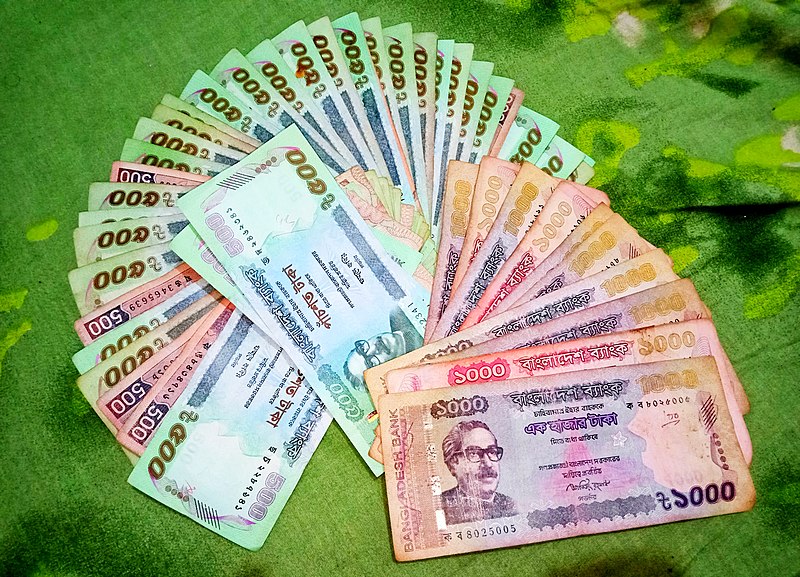
The step taken by the country toward a floating currency regime is being seen as an effort to boost economic growth to 7.5 percent for the next fiscal year
In line with the conditions imposed by the International Monetary Fund (IMF) to make itself eligible for a $4.7 billion loan programme, Bangladesh on Sunday (June 18) made a decisive move to a free-floating currency regime. India’s neighbour had till now a fixed exchange regime, which the country used to manage volatility and keep its imports affordable.
According to a statement by the Bangladesh Bank on Sunday (June 18), the new market-driven exchange rate regime will provide “greater transparency and efficiency in foreign exchange transactions, benefiting businesses, individuals and the economy”. The taka, the national currency of Bangladesh, saw a decline of 0.9 percent to 108.86 per dollar a day after the announcement, though the central bank doesn’t see any major depreciation. The taka has declined about 5 percent in 2023.
Also Read: Nobel laureate Yunus to pay 12 crore taka to Bangladesh government
The central bank is set to adopt a unified exchange rate regime against the dollar or any other foreign currency, the statement said. From July 1, the bank will not sell any foreign exchange at a discounted rate. The central bank said that by the third quarter of 2023, all international transactions will be conducted according to the new exchange rate structure and this will close the gap between formal and informal markets.
According to a Bloomberg report, owing to a spurt in demand for foreign currency, Bangladesh Bank has sold around $13 billion in the current fiscal year that will end on June 30.
Market experts see no major volatility after the free-floating currency regime comes into force in the country. The taka will remain largely stable if there is no major price shock in the international market, said a Dhaka-based expert. “Our analysis suggests that the exchange rate is showing less volatility as global commodity prices show signs of stability,” said Salim Afzal Shawon, head of research at BRAC EPL Stock Brokerage.
Bangladesh received $476 million in the first tranche of the IMF loans in February this year. The IMF is expected to disburse the second tranche in November. Prime Minister Sheikh Hasina has said that her country is in a position to repay the IMF loan. The lender gives assistance only to the countries which can repay, she added.
Bangladesh Bank Governor Abdur Rouf Talukder said that the central bank “will adopt a tight monetary policy” for the first half of the new fiscal year which will begin on July 1. His comments came after the central bank raised the repurchase agreement rate by 50 basis points to 6.5 percent and the standing deposit facility by 25 basis points.
The step taken by the country toward a floating currency regime is being seen as an effort to boost economic growth to 7.5 percent for the next fiscal year and come out from the shadow of being a least developed nation.
Also Read: India intervenes to douse tempers in US-Bangladesh spat
Bangladesh Bank also introduced a market-driven reference lending rate for all types of bank loans, replacing the three-year-old lending rate cap that helped keep easy credit available for private businesses.
The central bank had, in September 2022, made a determined move toward a floating currency regime when it allowed the taka to weaken, three months after Talukder took over as governor of the central bank.
In a floating currency regime, exchange rates are determined by market forces and governments have no role in weakening or becoming strong.
Pakistan and Egypt had earlier dropped fixed exchange rates this year.
(With agency inputs)



